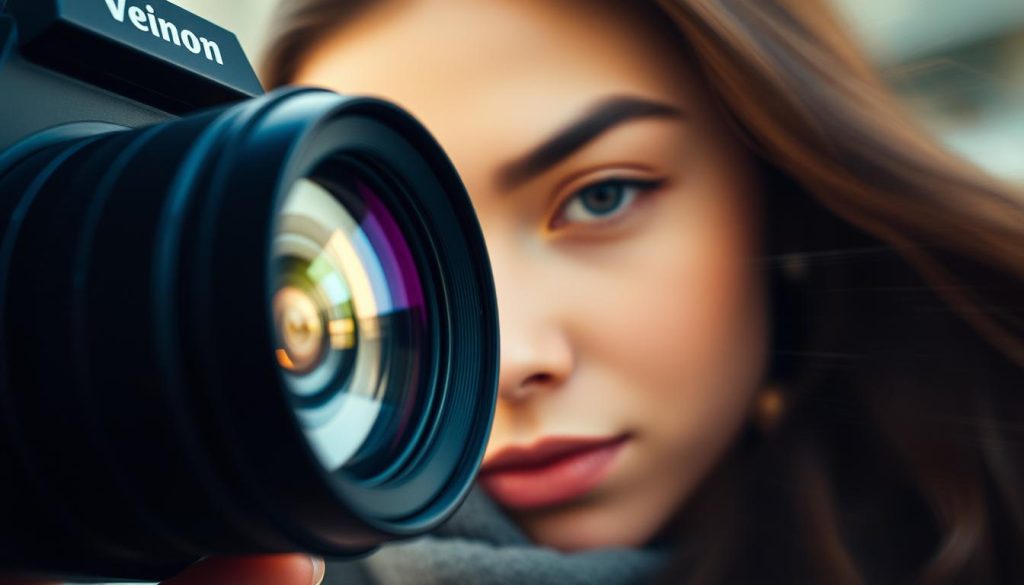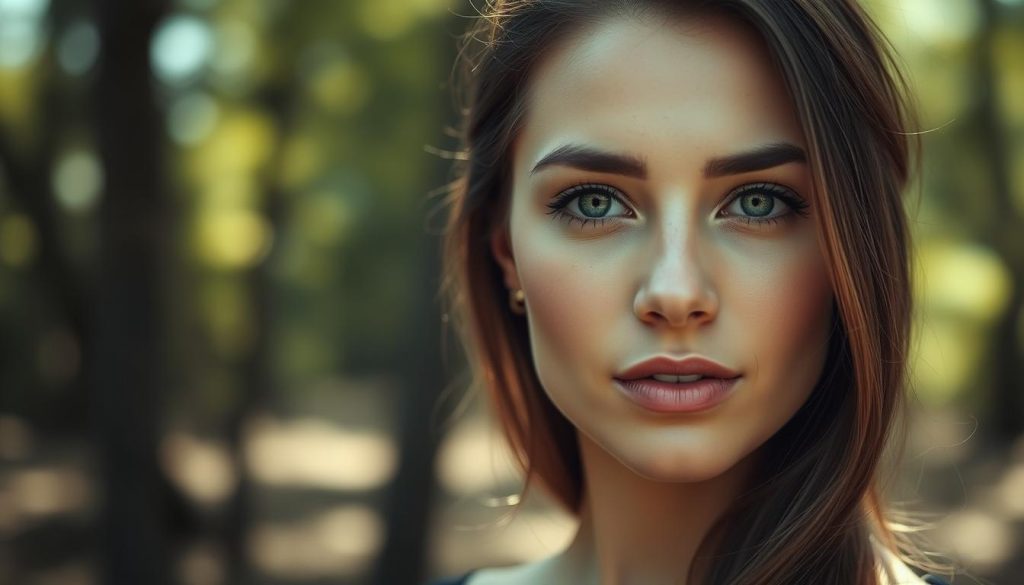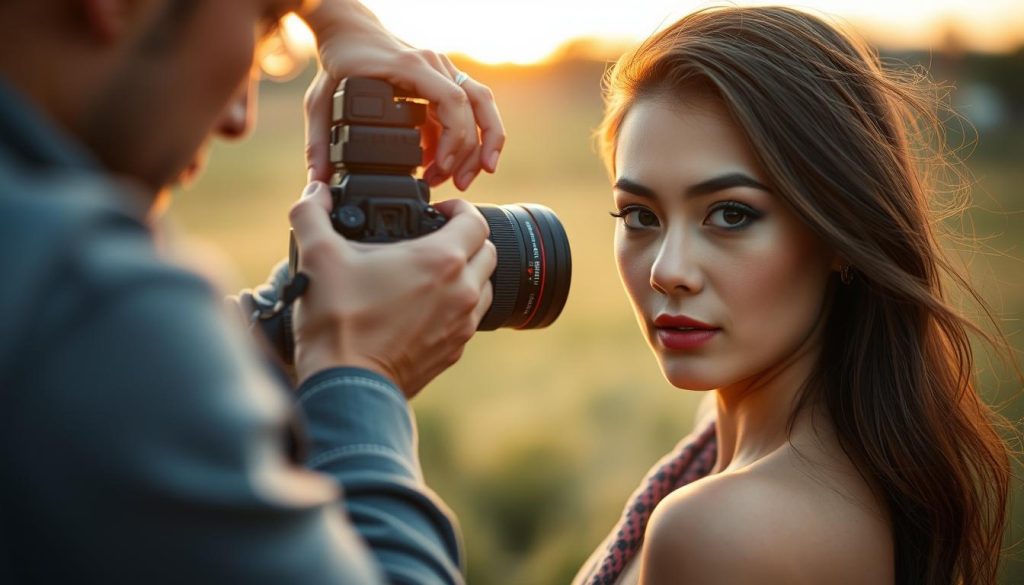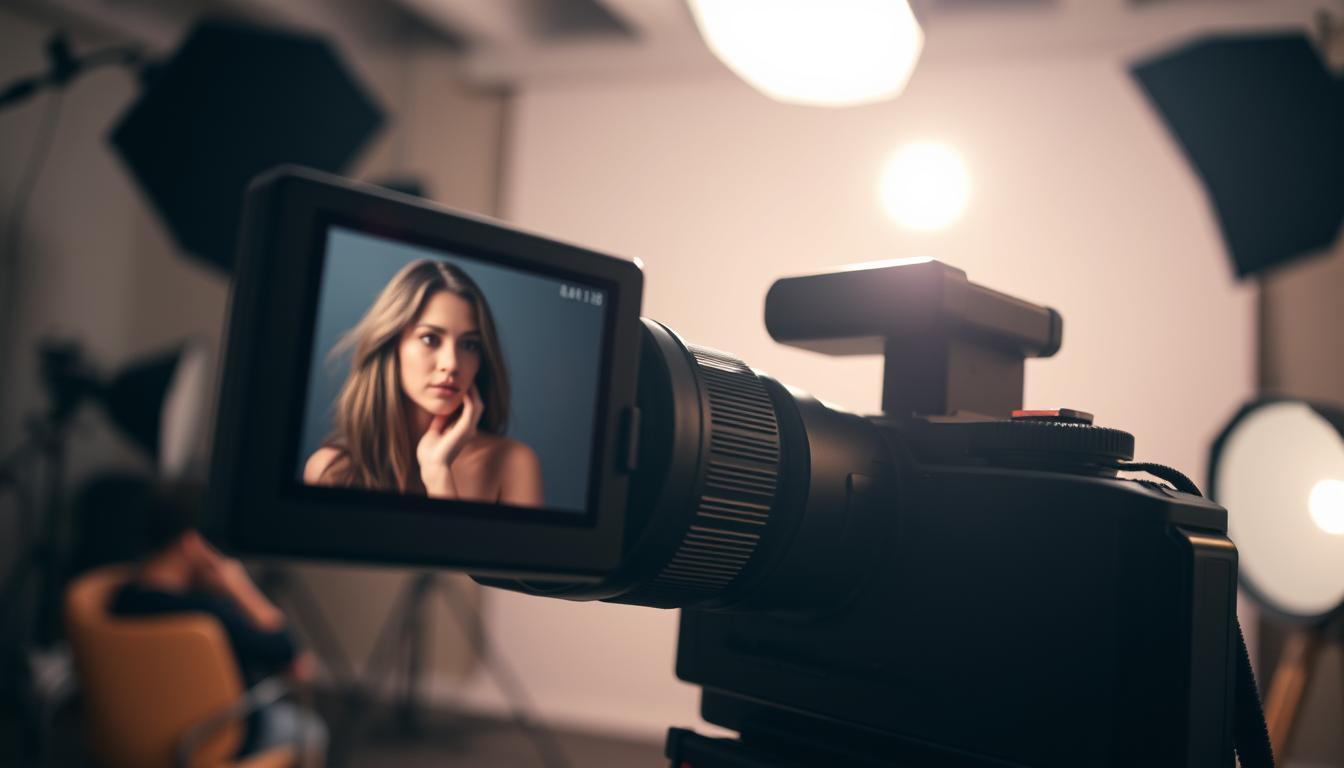As a passionate portrait photographer, I’ve learned a lot. Capturing stunning images is more than just clicking the shutter. You need to know the right camera settings for professional-looking portraits.
In this guide, I’ll share key tips and techniques. You’ll learn how to adjust aperture, shutter speed, ISO, and more. This will help you take breathtaking portraits every time.
Whether you’re new or experienced, you’ll find useful tips here. You’ll learn about depth of field, bokeh, focus, and white balance. These elements will improve your portrait photography.
So, let’s explore the camera settings for perfect photos. Get ready to enhance your portrait photography skills.
Understanding Aperture for Portrait Photography
Mastering aperture is key for stunning portraits. Aperture controls light and affects depth and bokeh. It’s vital for great portraits.
Depth of Field and Bokeh
A wide aperture, like f/2.8 or f/4, blurs the background. This makes your subject pop. It’s perfect for portraits, focusing on the face or key parts of the image.
A smaller aperture, such as f/8 or f/11, keeps more in focus. This is good for scenes where you want everything sharp.
Bokeh, the soft background blur, adds a touch of magic. It makes portraits look professional. By controlling aperture, you get sharp subjects and soft backgrounds.
Selecting the Right Aperture Value
The right aperture depends on your goals, lighting, and subject distance. For close-ups, use a wide aperture to isolate your subject. For full-body shots, a smaller aperture keeps more in focus.
Try different apertures to find what works best for you. Understanding aperture, depth, and bokeh will make your portraits stand out.
Mastering Shutter Speed for Crisp Portraits

Getting sharp, in-focus portraits is key in portrait photography. One important camera setting is the shutter speed. It decides how long the camera’s shutter is open. This affects how motion is caught in your photos.
To freeze your subject’s movement and get sharp portraits, use a fast shutter speed. Start with 1/250th of a second. This speed usually freezes most movement, making portraits sharp.
If your subject moves fast, you might need a faster shutter speed. Try 1/500th of a second or more. This will freeze motion in portraits and stop blurring.
For portraits showing movement or action, try slower shutter speeds. Like 1/125th of a second. This adds a dynamic, artistic feel to your photos.
The best shutter speed for portraits changes based on subject speed, lighting, and your desired look. Knowing how shutter speed affects portrait photography helps you capture sharp, detailed portraits every time.
Camera Settings for Portraits: ISO and Noise Control

Capturing stunning portraits in low-light conditions needs careful camera settings. The ISO setting is key. It affects how well your portraits turn out.
Balancing ISO for Low-Light Conditions
In dimly lit places, you’ll need to raise your ISO for good exposure. But, higher ISOs can add noise and grain to your photos. Here are some tips to find the right balance:
- Begin with the lowest ISO, like ISO 100 or 200, and go up slowly until you get the right light.
- Don’t make your ISO too high, as it can make your photos too noisy.
- Try different ISOs and see when noise starts to show up.
- Use your camera’s noise reduction tools to lessen the effect of high ISOs.
Learning to balance ISO for low-light portraits helps you get great photos. You’ll get clear images with little noise, making your subjects look amazing.
| ISO Setting | Noise Level | Recommended Use |
|---|---|---|
| 100-400 | Low | Bright lighting conditions |
| 800-1600 | Moderate | Moderate lighting conditions |
| 3200-6400 | High | Low-light conditions |
Focusing Techniques for Tack-Sharp Portrait Images

Getting precise focus is key for stunning portraits. I’ll show you the top focusing methods. This includes when to use autofocus versus manual focus to keep your subject sharp.
Autofocus vs. Manual Focus for Portraits
Portrait photography uses both autofocus and manual focus well. Autofocus quickly grabs focus on your subject. But manual focus gives you more control, especially for off-center shots.
- Autofocus: Great for quick shots or moving subjects. It locks focus on eyes or faces fast.
- Manual Focus: Best for shallow depth of field. It lets you focus exactly where you want, like eyes. It’s also good for off-center shots.
Try both autofocus and manual focus to see what works best for you. It depends on your style and the scene.
Mastering autofocus and manual focus is crucial for sharp portraits. Knowing when to use each helps you take amazing, sharp photos.
White Balance: Capturing Natural Skin Tones
As a portrait photographer, it’s key to get skin tones right. The trick is mastering white balance. This camera setting makes colors look accurate. Knowing how white balance affects portraits can improve your work.
Getting white balance right is vital for true skin tones. If it’s off, skin can look unnatural. The right setting makes skin tones look natural and appealing.
Correct white balance captures your subjects’ true skin colors. It works for all skin types. This detail boosts your portrait’s quality and impact.
To get white balance right, play with your camera’s settings. Try Daylight, Cloudy, or Shade presets. Or use custom white balance for the best results in your lighting.
Understanding and controlling white balance is crucial. It makes portraits look natural and alive. This skill impresses clients and highlights your subjects’ beauty.
Metering Modes: Ensuring Proper Exposure
Getting the right exposure in your portrait photos is key. The camera’s metering mode is a big help. It lets you get the skin tones right and show your subject’s beauty.
Spot Metering for Accurate Skin Exposure
Spot metering is a great tool for portraits. It looks at a small area, like the face, not the whole picture. This helps get the skin right.
Spot metering makes sure the skin is just right. It prevents too bright or too dark areas. This keeps your photos looking great.
To use spot metering, point it at your subject’s face. This tells your camera to focus on that area. It makes sure the important parts are exposed well.
Try different metering modes to find what works for you. Spot metering is great for portraits. It makes skin tones look natural and professional.
Camera Settings for Portraits: Putting It All Together
In this final section, I’ll put together all the camera settings we’ve talked about. You’ll get a full guide on how to use them to take amazing portraits. With what you’ve learned, you’ll be able to adjust your camera settings well. This will help you take professional-quality portraits that really show off your subjects.
We’ve covered how aperture, shutter speed, and ISO affect your photos. You’ve also learned about focus techniques and white balance. Now, you have the tools to improve your portrait photography. By carefully adjusting these settings, you can get the right mix of depth, sharpness, and skin tones.
Based on what we’ve learned, here’s a good starting point for your portrait photography. Use a medium aperture value (around f/5.6 to f/8) for a nice depth of field. Choose a shutter speed of 1/125s or faster to stop your subject’s movements. And pick an ISO that balances quality with the light you have. Adjust these settings as needed for the lighting and your vision.

